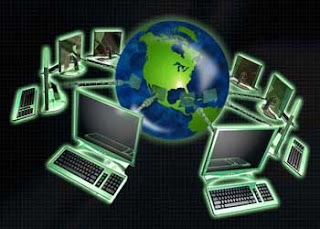In our society today, computer is of great importance. In grocery stores, it is used to calculate data. In companies, it is for storage of important files. In call center agencies, it is use to access communication. In school, it is for educational purposes.
This lesson introduced computers as a source for information and an access to communication. Through internet, one is able to surf the net and search for many important information. One is also able to access communication through emails, blog sites and social networking sites. Different multimedia is readily available in computers. This includes text, sounds, graphics, photos and music. Normally installed programs like Microsoft word, power point, excel, and Internet Explorer could enhance teaching and learning process. Adobe Reader, Photoshoppe and Photoscape can evaluate the creativity of the learners through photo editing. Yahoo Messanger and MSN could also enhance collaboration among learners.
Personally, these programs really contributed to my motivation in learning. It provide various techniques and strategies in learning something. Making blog sites offers more creative and innovative way of making an essay. I am able to write and at the same time design my own blog. Hence, my teacher would not only focus on my writing skills but could also evaluate my creativity.
This lesson introduced computers as a source for information and an access to communication. Through internet, one is able to surf the net and search for many important information. One is also able to access communication through emails, blog sites and social networking sites. Different multimedia is readily available in computers. This includes text, sounds, graphics, photos and music. Normally installed programs like Microsoft word, power point, excel, and Internet Explorer could enhance teaching and learning process. Adobe Reader, Photoshoppe and Photoscape can evaluate the creativity of the learners through photo editing. Yahoo Messanger and MSN could also enhance collaboration among learners.
Personally, these programs really contributed to my motivation in learning. It provide various techniques and strategies in learning something. Making blog sites offers more creative and innovative way of making an essay. I am able to write and at the same time design my own blog. Hence, my teacher would not only focus on my writing skills but could also evaluate my creativity.
 The advantages of using computer have clearly manifested in educational arena. Educational programs offer in computer could not only provide further learning and knowledge to learners but also evaluate more than one skill that a learner has. In this way, teachers could easily see the strength and abilities develop and the things that they need to improve.
The advantages of using computer have clearly manifested in educational arena. Educational programs offer in computer could not only provide further learning and knowledge to learners but also evaluate more than one skill that a learner has. In this way, teachers could easily see the strength and abilities develop and the things that they need to improve.
Let these computers would not replace teachers, instead, let it be a tool that could benefit both teachers and students. Let it provide wide range of knowledge and could produce and authentic and reliable evaluation.














